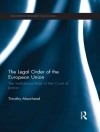This book examines the crisis of EMU through the lenses of comparative political economy. It retraces the development of wage-setting systems in the core and peripheral EMU member states, and how these contributed to the increasing divergence between creditor and debtor states in the late 2000s. Starting with the construction of the Deutschmark bloc, through the Maastricht process of the 1990s, and into the first decade of EMU, this book analyzes how labour unionsand wage determination systems adjusted in response to monetary integration and, in turn, influenced the shape that monetary union would eventually take. Before the introduction of the Euro, labour unions were disciplined by central banks and governments, after social conflict in the north of thecontinent and with the use of social pacts in the others. Since controlling inflation had become the main goal of macro-economic policy, national central banks acted as a backstop to keep militant unions and profligate governments under control. Public sector wages thus were subordinated to manufacturing wages, a set-up policed by export sector unions, aided by the central bank. With the introduction of the single currency, the European Central Bank replaced the national central banks and, as aresult, their capacity to control labour unions disappeared. The strong links between wages in the public sector unions and wages in the manufacturing export sector weakened dramatically in many countries, wage inflation re-emerged, and the stage was set for the current account divergences at thebasis of the crisis of EMU.
Bob Hancke
Unions, Central Banks, and EMU [PDF ebook]
Labour Market Institutions and Monetary Integration in Europe
Unions, Central Banks, and EMU [PDF ebook]
Labour Market Institutions and Monetary Integration in Europe
购买此电子书可免费获赠一本!
语言 英语 ● 格式 PDF ● ISBN 9780191638206 ● 出版者 OUP Oxford ● 发布时间 2013 ● 下载 6 时 ● 货币 EUR ● ID 2673372 ● 复制保护 Adobe DRM
需要具备DRM功能的电子书阅读器












